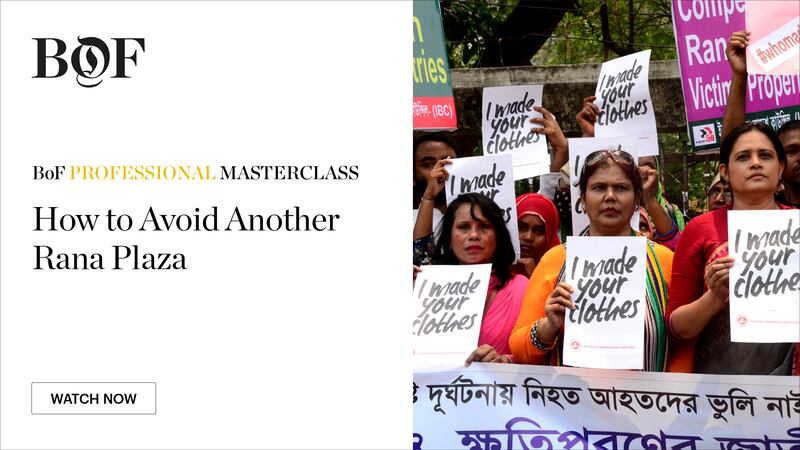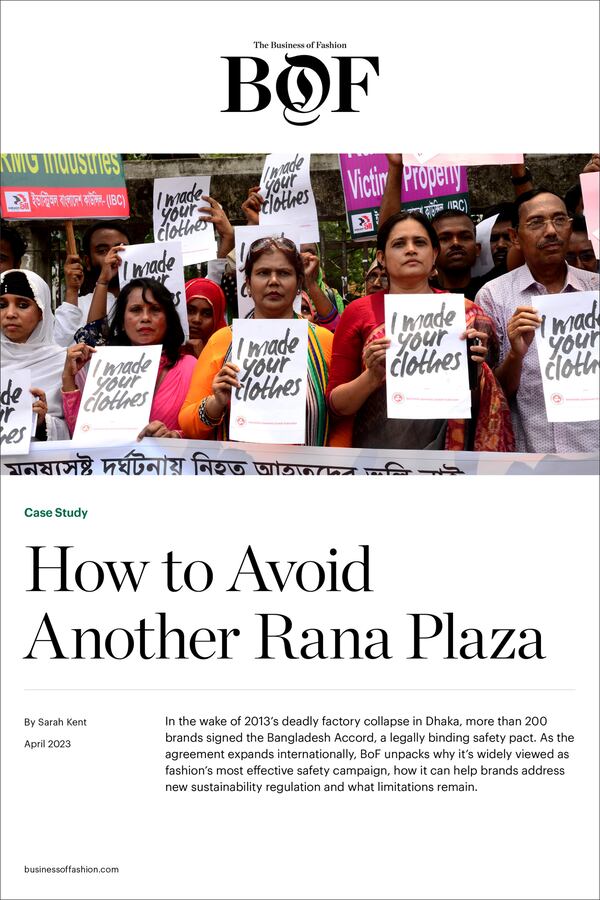
The Business of Fashion
Agenda-setting intelligence, analysis and advice for the global fashion community.

Agenda-setting intelligence, analysis and advice for the global fashion community.

The author has shared a YouTube video.
You will need to accept and consent to the use of cookies and similar technologies by our third-party partners (including: YouTube, Instagram or Twitter), in order to view embedded content in this article and others you may visit in future.
Created by BoF’s journalists and editors, in conjunction with our wider network of leading fashion creatives, thought-leaders, and innovators, Masterclasses are in-depth webinars with supporting resources, designed to deliver key learning outcomes on critical industry topics.
The 2013 collapse of Rana Plaza, a garment factory located in Bangladesh, killed over 1,000 people, sparked a reckoning for the fashion industry. The immediate aftermath of the tragedy saw the creation of the Bangladesh Accord, a groundbreaking safety agreement to increase oversight of factories and create a safe environment. Today, it’s been signed by 200 brands and is often used as a blueprint for new sustainability regulations, and Oris Oldenziel, executive director of the International Accord Foundation, encouraged brands to stay and grow in the region.
“The improved health and safety in the Bangladesh garment industry has contributed largely to that growth, and has given the brands the confidence to continue sourcing,” said Oldenziel.
In this Masterclass, BoF chief sustainability correspondent Sarah Kent Kent is joined by Michael Bride, the senior vice president of corporate responsibility and global affairs at PVH Corp; Oldenziel; Zehra Khan, the general secretary of the HBWWC Association and Ayesha Barenblat, founder and chief executive of Remake to unpack BoF’s case study “How to Avoid Another Rana Plaza” and reflect on the change the past decade has brought — and what can still be done.

Exclusive to BoF Professional members.
Labour rights activist Kalpona Akter and chief sustainability correspondent Sarah Kent reflect on where the industry stands a decade after the deadly factory collapse.
The fashion industry continues to advance voluntary and unlikely solutions to its plastic problem. Only higher prices will flip the script, writes Kenneth P. Pucker.
The outerwear company is set to start selling wetsuits made in part by harvesting materials from old ones.
Companies like Hermès, Kering and LVMH say they have spent millions to ensure they are sourcing crocodile and snakeskin leathers responsibly. But critics say incidents like the recent smuggling conviction of designer Nancy Gonzalez show loopholes persist despite tightening controls.
Europe’s Parliament has signed off rules that will make brands more accountable for what happens in their supply chains, ban products made with forced labour and set new environmental standards for the design and disposal of products.